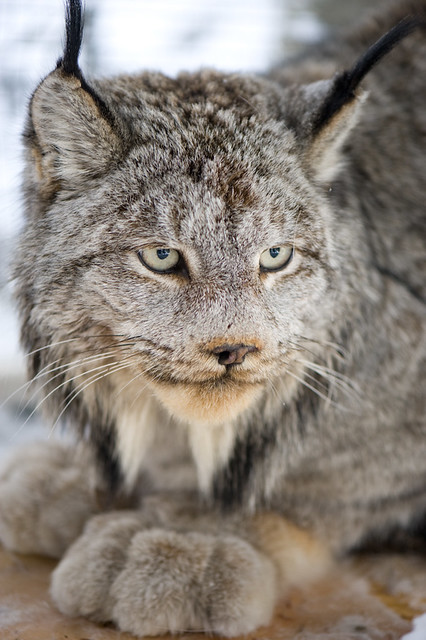
Canada Lynx, hikers, and snowmobile enthusiasts can co-exist on national forests, according to a conclusion reached by USDA Forest Service researchers who published the first ever study of the impacts of recreationists on Canada Lynx movements (PDF, 1.3 MB).
The researchers gathered input for the study by placing GPS collars on 18 cats and also asked visitors to national forests if they’d carry GPS collars in their backpacks or snowmobiles.
“People were enthusiastic about helping us,” said John Squires, a Forest Service scientist based in Missoula, Mont. “Thanks to their assistance, we have now have big databases on the tracking habits of humans and Canada Lynx over a large landscape. From that data, we’ve been able to build models that help us understand how lynx and recreationists respond to landscape conditions, and to each other. The knowledge will make it possible to better manage forests that accommodate both their needs.”
The Canada Lynx resembles a bobcat with huge feet that serve as snowshoes, allowing it to track and attack prey on snowy landscapes. It lives in dense forests and mates once a year, producing an average of two to five kittens per litter.
“Its primary food source is the snowshoe hare,” Squires said. “Litter size reflects the current availability of hares.”
The lynx is prevalent in Canada, but it is listed as a threatened species under the Endangered Species Act in the U.S., where it lives mostly along the U.S. and Canadian border.
Tracking data from the study revealed that the lynx spends most of its time in dense forest areas, while recreationists generally use open spaces or less dense forests. For the most part, it’s a peaceful co-existence.
“Lynx will move alongside a trail used by cross-country skiers if they’ve got forest cover,” Squires said. “The lynx also react to times of heightened activity by recreationists by becoming more active at night.”
This research will help land managers balance the habitat needs of the Canada Lynx with the expectations of recreationists – especially during winter, when visitor activities such as cross-country skiing and snowmobiling help boost local economies across the Western U.S. It also helps land managers to better predict how forest management can influence the movement of lynx and recreationists across the winter landscapes of the Rocky Mountains.

